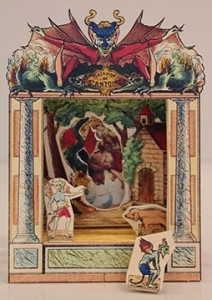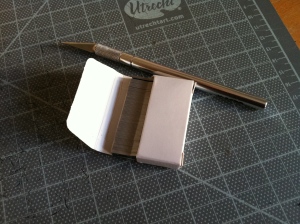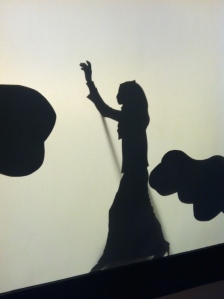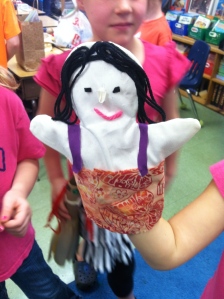Last summer, we went on our first out-of-state tour, taking the shadow show Saudade to six different venues in Minneapolis. This summer, we haven’t performed any shadow work, but I did have the opportunity to see three very different shadow and silhouette based pieces of art in DC and New York City.
Back in the spring, we performed Saudade at the Smithsonian American Art Museum, for the opening of a new exhibit of contemporary and historical silhouettes called Black Out: Silhouettes Then and Now. While I knew a little about the history of silhouettes, mainly that they were an inexpensive form of portraiture in the eighteenth and nineteenth centuries, it was interesting to see more complicated compositions, such as this depiction of a magic lantern show by Auguste Edouart.

A silhouette of a magic lantern show in the 1800’s cut by Auguste Edouart.
One of the contemporary artists featured in the exhibit is Kristi Malakoff. Much of her work involves the transformation of two-dimensional objects into three-dimensional artwork and her piece in the exhibit is this beautiful three-dimensional silhouette sculpture of children around a maypole.
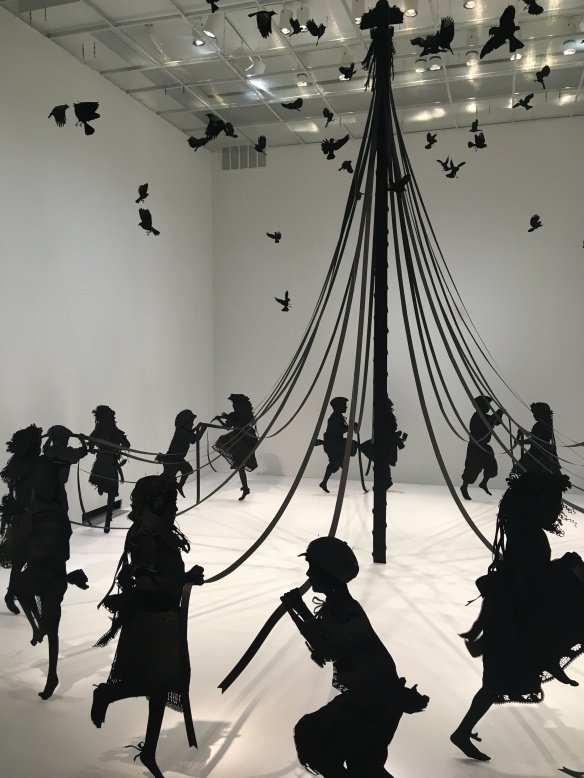
Kristi Malakoff’s silhouette sculpture at the Smithsonian American Art Museum.
In 2016, we had the opportunity to perform at the Smithsonian Folklife Festival, an annual event that presents artists from all over the world. We performed as part of a section of the festival about migration, titled On the Move, but most of the festival focuses on particular regions or countries around the world. This year, the Smithsonian presented artists from Armenia and Catalonia, including several kinds of puppet artists. The Ayrogi Shadow Theater is a group of performers who travel around Armenia performing shadow puppetry. They trace their traditional storytelling back to the 1830’s and in contrast to more complex and colorful shadow puppets found in the region, use a simple style of puppet made from cardboard or leather.

Shadow puppets by Ayrogi Shadow Theater from Armenia at the Smithsonian Folklife Festival.
Finally, I was able to visit the National Museum of the American Indian in New York City while I was there for work in early August. I’m very familiar with the DC museum but had never had an excuse to visit the Heye center in New York, housed in the Alexander Hamilton US Custom House downtown. I went primarily to see a new exhibit about Taino Heritage and Identity, but I also happened upon a set of rooms titled Transformer: Native Art in Light and Sound. Of course transformation is at the heart of all puppetry, and I was especially moved by the piece The Harbinger of Catastrophe by Marianne Nicolson (Kwakwaka‘wakw). The box sits in the middle of the room and the shadows it casts stretch to fill the entire floor and walls so that the viewer walks through and disrupts them as they move around the space. It was an immersive experience that I’m still thinking about. If you have a chance to see the exhibit before it closes in January, I highly recommend it.

The Harbinger of Catastrophe by Marianne Nicolson (Kwakwaka‘wakw) at the American Indian Museum, NYC.









